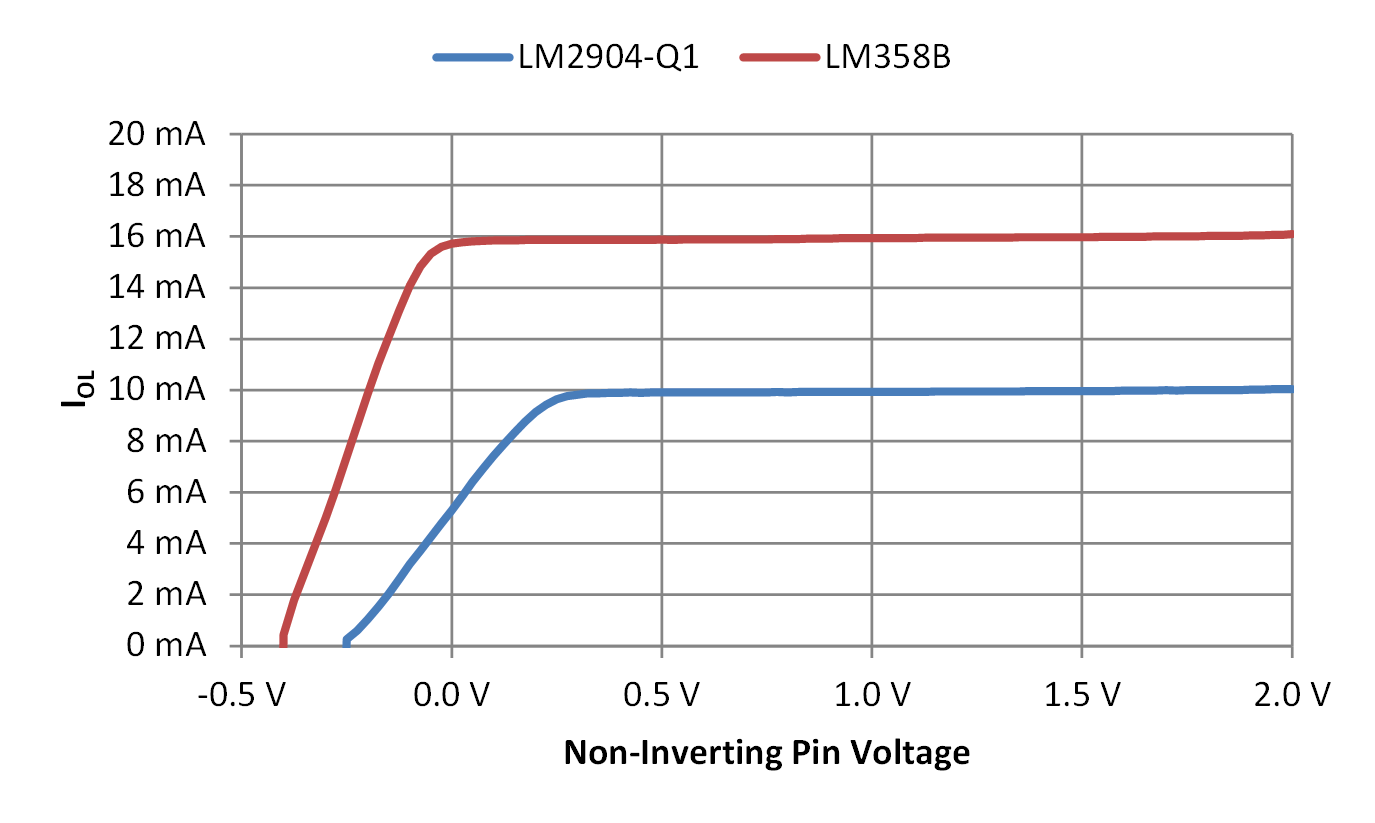SLOA277B january 2019 – july 2023 LM124 , LM124-N , LM124A , LM158 , LM158-N , LM158A , LM224 , LM224-N , LM224A , LM258 , LM258-N , LM258A , LM2902 , LM2902-N , LM2902-Q1 , LM2902K , LM2902KAV , LM2904 , LM2904-N , LM2904-Q1 , LM2904B , LM2904B-Q1 , LM2904BA , LM321 , LM324 , LM324-N , LM324A , LM358 , LM358-N , LM358A , LM358B , LM358BA , TS321 , TS321-Q1
3.2 IOL and Common Mode Voltage
When the op amp is used to sink high current, consider making the input common mode greater than 0.8 V. Also, the maximum sink current of the PNP emitter follower can be reduced when the non-inverting input is 0 V and the junction temperature is high. Figure 3-3 shows the relation between the non-inverting input voltage and the sinking current with a 2-V output and a junction temperature of 125°C. Op amps with "B" in the name suffix have IOL that is less sensitive to the low non-inverting pin voltage.
 Figure 3-3 IOL vs Non-Inverting Pin Voltage, VCC = 5 V, VOUT = 2 V, TJ = 125°C
Figure 3-3 IOL vs Non-Inverting Pin Voltage, VCC = 5 V, VOUT = 2 V, TJ = 125°CShorts to positive voltage may damage the device as stated in the absolute maximum rating table in the data sheets. Damage is more likely if the short voltage is greater than 10 V relative to the GND, or V–, pin.